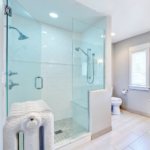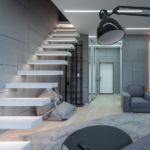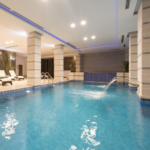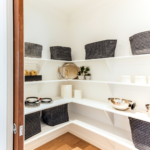Creating the perfect basement swimming pool for everyday swimming sessions requires careful consideration of space, design, and functionality. Incorporate state-of-the-art ventilation and air handling systems to maintain a comfortable environment, and choose features like swim treadmills for continuous training. Opt for a design that maximizes usability while adhering to structural and waterproofing requirements. For those who seek to enhance their home’s luxury and utility further, exploring more detailed insights can provide valuable guidance.
Key Takeaways
- Ensure compliance with building regulations for safety and legal adherence.
- Install advanced ventilation and dehumidification systems for optimal air quality and humidity control.
- Incorporate a swimming treadmill for continuous swim training and fitness.
- Use high-quality, durable materials for structural reinforcement and waterproofing.
- Design the pool area with modern amenities like LED lighting and temperature controls for a comfortable swimming environment.
What Are the Benefits of Having a Basement Swimming Pool?
Integrating a swimming pool into a basement can greatly boost a property’s market value, offering a compelling feature that distinguishes it from others in the real estate market.
The advantage of an indoor pool, particularly in the basement, extends to providing entertainment and fitness opportunities regardless of weather conditions, ensuring year-round usage.
Additionally, a luxury basement pool serves not only as a recreational area but also as a sophisticated architectural element that enhances the aesthetic and functional appeal of the home.
How Does a Basement Pool Enhance Home Value
Why should homeowners consider installing a basement swimming pool? A luxury basement swimming pool not only serves as a unique feature within a house but also greatly enhances property value.
Here are the key reasons:
- Increased Property Value: Homes with indoor swimming pools often attract higher market prices due to their appeal as a luxury amenity.
- Unique Selling Point: When competing in a crowded market, a house with a well-designed indoor pool can stand out, especially if it complies with building regulations and planning permission.
- Enhanced Usability of Space: Transforming an underutilized basement into a vibrant and functional area adds valuable, usable square footage, which can be a critical factor during property evaluation.
Can an Indoor Pool Provide Year-Round Enjoyment
Having discussed the impact of a basement swimming pool on property value, it is equally important to contemplate the personal benefits it provides to homeowners. A basement pool offers the advantage of year-round swimming, irrespective of the weather conditions outside. This indoor setting guarantees that elements like dehumidification and air handling systems create a comfortable pool environment, enhancing the overall indoor swimming experience.
| Feature | Benefit |
|---|---|
| Dehumidification | Maintains humidity, prevents damage |
| Heating & Filtration | Guarantees warm, clean water |
| Swimming Treadmill | Allows for continuous swim training |
These systems, integral to the maintenance of a swimming pool basement, guarantee that the water remains pristine and the space usable, thereby maximizing the investment in a basement pool.
What Makes a Luxury Basement Pool a Unique Feature
While a basement swimming pool is a significant home improvement, its transformation into a luxury feature elevates both the aesthetic appeal and functional value of a property.
Luxury basements with indoor swimming pools integrate state-of-the-art design and technology, offering exclusivity and comfort.
- Moveable Floors: Adjust depth for safety or convert to a solid floor, maximizing space utility.
- Advanced Lighting and Air Handling: Enhances ambiance and guarantees a comfortable climate, managing humidity and temperature efficiently.
- Water Table Management: Sophisticated systems maintain ideal water levels and quality, essential in underground swimming pool settings.
Such features not only underscore the luxury of having a basement pool but also smartly navigate the challenges of basement pool cost and installation.
What Are the Key Considerations When Building a Pool in the Basement?
When planning a basement swimming pool, adherence to building regulations is vital to guarantee safety and compliance.
Securing planning permission might be necessary, depending on local laws, which impacts the project timeline and design.
Additionally, implementing sophisticated air handling solutions is essential to maintain air quality and manage humidity levels in a confined basement space.
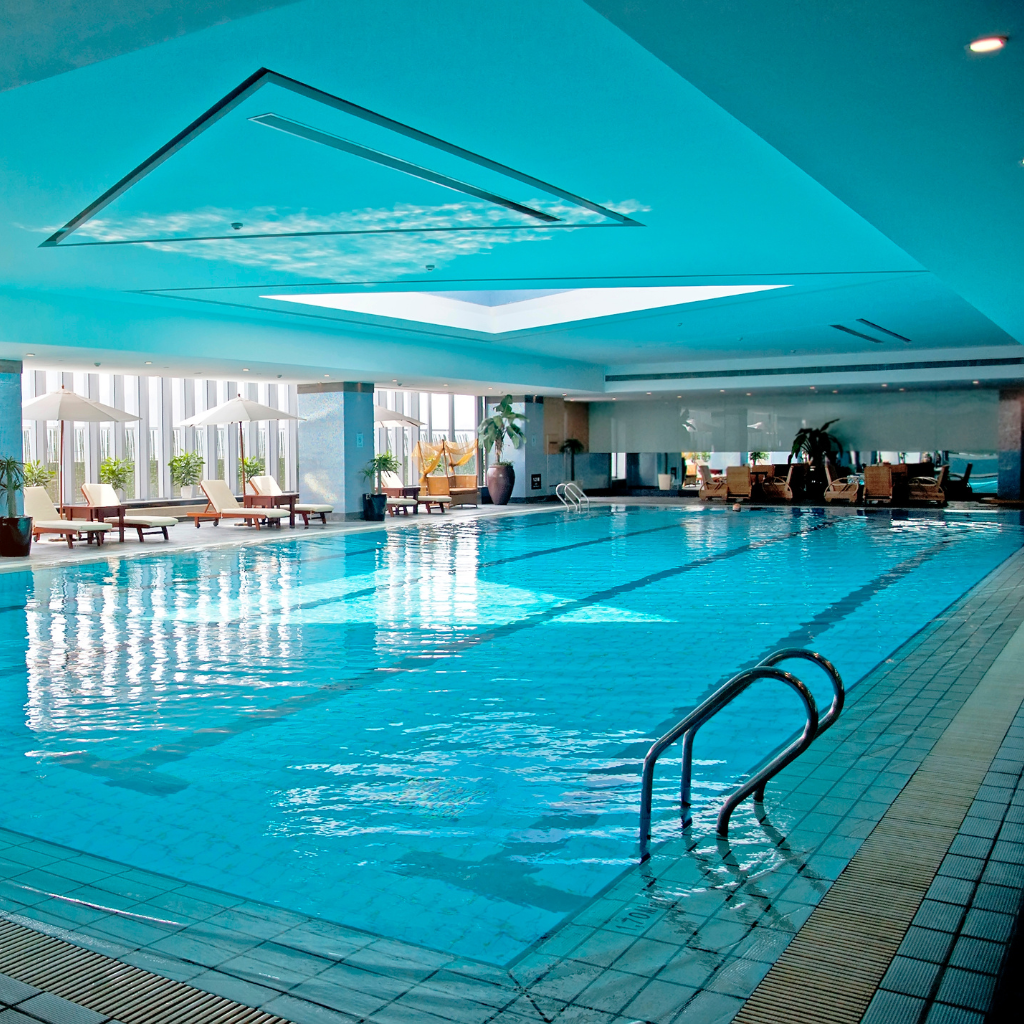
What Building Regulations Must Be Followed
Implementing a swimming pool in a basement involves adhering to numerous critical building regulations to maintain safety, functionality, and structural integrity.
When undertaking building and construction work for an indoor basement pool, several specific regulations must be followed:
- Structural Reinforcement: Basement conversions involving excavation to dig out a basement require enhanced structural support for walls and the ceiling to handle both the weight of the water and the soil pressure from the surrounding ground level.
- Waterproofing: Effective waterproofing systems must be installed to prevent water ingress and protect the building’s foundation and structural elements, including the roof.
- Ventilation Systems: Adequate ventilation must be designed to manage humidity levels and promote air quality, preventing moisture-related issues and ensuring a comfortable environment.
Is Planning Permission Required for a Basement Pool
When initiating building a pool, particularly in regions like London, basement pool projects often necessitate planning permission, especially if the structure alters the building’s exterior or the use of the space beneath.
For a pool in a newly constructed basement or extensive basement extensions, it’s vital to adhere to local council regulations.
Discover our range of pool designs that maximize the utility of new basements while ensuring compliance with architectural norms.
Whether transforming an existing space into an indoor spa pool or integrating a swimming pool into your home, understanding and securing the right permissions is essential for a smooth and innovative enhancement to your property.
How to Ensure Proper Air Handling in a Basement Pool
Securing the necessary planning permissions is just the first step in adding a basement swimming pool to your home.
Guaranteeing a healthy swimming pool environment requires state-of-the-art air handling systems. Here are the key considerations:
- Ventilation Technology: Implement advanced ventilation solutions that can efficiently exchange indoor air with fresh outdoor air, minimizing chlorine odors and maintaining humidity levels.
- Dehumidification Systems: Use robust dehumidifiers to control moisture and prevent condensation, protecting the basement structure and guaranteeing comfortable air quality.
- Ozone Generators: Integrate ozone purification systems to reduce chlorine use and improve air quality, thereby enhancing the overall swim experience in the basement swimming pool space.
Proper air handling guarantees the longevity of the pool and the health of its users.
What Are Some Pool Design Ideas for Indoor Basement Pools?
When designing an indoor basement pool, homeowners can enhance the spa-like ambiance by integrating a steam room or sauna directly connected to the pool area.
Considering the latest trends in swimming pool design, such as infinity edges or LED lighting, can transform a simple basement pool into a modern retreat.
Additionally, the choice between a lap pool and a natural swimming pool should be dictated by the available space and the homeowners’ fitness or aesthetic preferences.
How to Incorporate a Steam Room or Sauna
Incorporating a steam room or sauna into a basement swimming pool design not only enhances the luxury of the space but also optimizes the health benefits associated with heat therapies.
When designing for small basements where space is at a premium, integrating these wellness features requires innovative and practical solutions:
- Optimize Layout: Position the sauna or steam room adjacent to the pool for seamless passage from cool to heat therapy, enhancing the fitness and spa experience.
- Convertible Spaces: Implement retractable walls or multi-functional furniture to transform the room usage based on need, maximizing the feel of the space.
- Integrated Systems: Use combined heating and ventilation systems for both the pool and the sauna or steam room to conserve space and maintain energy efficiency.
What Are the Trends in Swimming Pool Design
What are the latest trends shaping indoor basement swimming pool designs? Today’s subterranean pools often mimic the sophistication of a London swimming pool, reflecting a broad range of pool designs. Innovations like swimming treadmills are integrated, using powerful jets to create a swimming current, allowing for exercise in a compact space. Natural light enhancements and strategic lighting are also key, transforming pools into luminous havens.
| Trend | Description |
|---|---|
| Natural Swimming Pool | Utilizes bio-filtration for chemical-free water |
| Swimming Current | Jets create a treadmill effect for exercise |
| Plant Room Integration | Essential systems housed discreetly |
| Light Maximization | Amplifies natural light, enhances mood |
These features not only redefine comfort but also bring eco-friendly and health-focused benefits to indoor swimming environments.
How to Choose Between a Lap Pool and a Natural Swimming Pool
As homeowners explore the domain of indoor basement swimming pools, selecting the right type—be it a lap pool or a natural swimming pool—becomes a pivotal decision.
- Lap Pool: Ideal for those focusing on fitness, a lap pool in the basement maximizes limited space, allowing for regular swim sessions.
- Natural Swimming Pool: Integrates water features and eco-friendly designs, creating a harmonious blend with your home’s natural aesthetics.
Installation costs might be higher due to the complex ecosystem required, but it offers a unique, chemical-free swimming experience.
How to Maintain a Basement Swimming Pool?
Maintaining a basement swimming pool requires precise management of chlorine levels and water treatment to guarantee the safety and clarity of the water.
Innovative technologies such as smart chemical feeders can automate the process, providing consistent water quality without frequent manual adjustments.
Additionally, controlling the indoor pool environment with dehumidifiers and proper ventilation systems prevents structural damage and promotes a comfortable swimming atmosphere.
What Are the Best Practices for Chlorine and Water Treatment
Maintaining the right balance of chlorine and implementing effective water treatment strategies are vital for maintaining a basement swimming pool’s pristine condition and safety.
Proper management not only safeguards the health of swimmers, including children but also optimizes the pool’s cost and longevity by preventing algae and bacterial growth.
Here are the best practices:
- Regular Chlorine Checks: Guarantee consistent monitoring of chlorine levels to maintain the recommended range, essential for effective disinfection.
- pH Balance: Regularly test and adjust the pH level to prevent corrosion and scaling, guaranteeing the effectiveness of chlorine.
- Filtration System Maintenance: Keep the water treatment process efficient by routinely cleaning or replacing filters to manage debris and maintain clear, clean water in your new pool or hot tub.
How to Manage Indoor Swimming Pool Environment
To effectively manage the environment of a basement swimming pool, controlling humidity levels becomes fundamental, as excessive moisture can lead to structural damage and mold growth. Implementing advanced ventilation systems can enhance air quality and facilitate humidity control. Heating systems must be calibrated for ideal temperature regulation, fundamental for both comfort and energy efficiency. Regular pool maintenance, including precise water treatment, is critical to sustain the indoor swimming pool environment.
| Feature | Function | Importance |
|---|---|---|
| Ventilation | Reduces humidity, improves air | Essential for air quality and structural health |
| Heating Systems | Maintains water and air temperature | Fundamental for user comfort and energy efficiency |
| Water Treatment | Guarantees clean and safe water | Crucial for health and pool longevity |
These elements collectively guarantee a well-maintained basement swimming pool.
How Much Does a Basement Pool Cost?
The cost of installing a basement swimming pool can vary widely, influenced by factors such as size, materials, design complexity, and additional features like heating or lighting systems.
Comparatively, basement pools typically incur higher expenses than their outdoor counterparts due to challenges like structural reinforcements and waterproofing needs.
Understanding these cost influencers can help homeowners plan and allocate resources more efficiently for such a significant home improvement project.
What Factors Influence Pool Cost
While many homeowners dream of installing a swimming pool in their basement, understanding the various factors that influence the cost is essential.
The installation of a basement pool, such as those by Compass Pools, often complements high-end properties and newly constructed London basements, adding a luxurious touch to underground living spaces.
Here are some key cost-influencing factors:
- Complexity of Construction: The structural challenges of reinforcing a basement to accommodate a pool increase costs.
- Materials and Features: High-end finishes and innovative features like adjustable floors can elevate the price.
- Size and Design: Larger and more complex designs are more expensive, reflecting the bespoke nature of dream swimming environments within the basement.
Is a Basement Pool More Expensive Than an Outdoor Pool
Considering the unique challenges and requirements, installing a swimming pool in a basement generally incurs higher costs compared to an outdoor pool.
Key factors contributing to the higher expense include the need for extensive structural reinforcements and advanced waterproofing solutions to protect the basement floor and walls.
Unlike an above ground pool or garden-based outdoor pools, basement pools require specialized engineering to guarantee safe water containment and appropriate access.
Additional considerations like integrating a gym or a rest area might necessitate further modifications and expenses.
When designing a basement pool, practical tips include maximizing the available space and installing efficient ventilation systems to handle humidity and chemical odors, further adding to the cost but enhancing the overall functionality and safety of the installation.
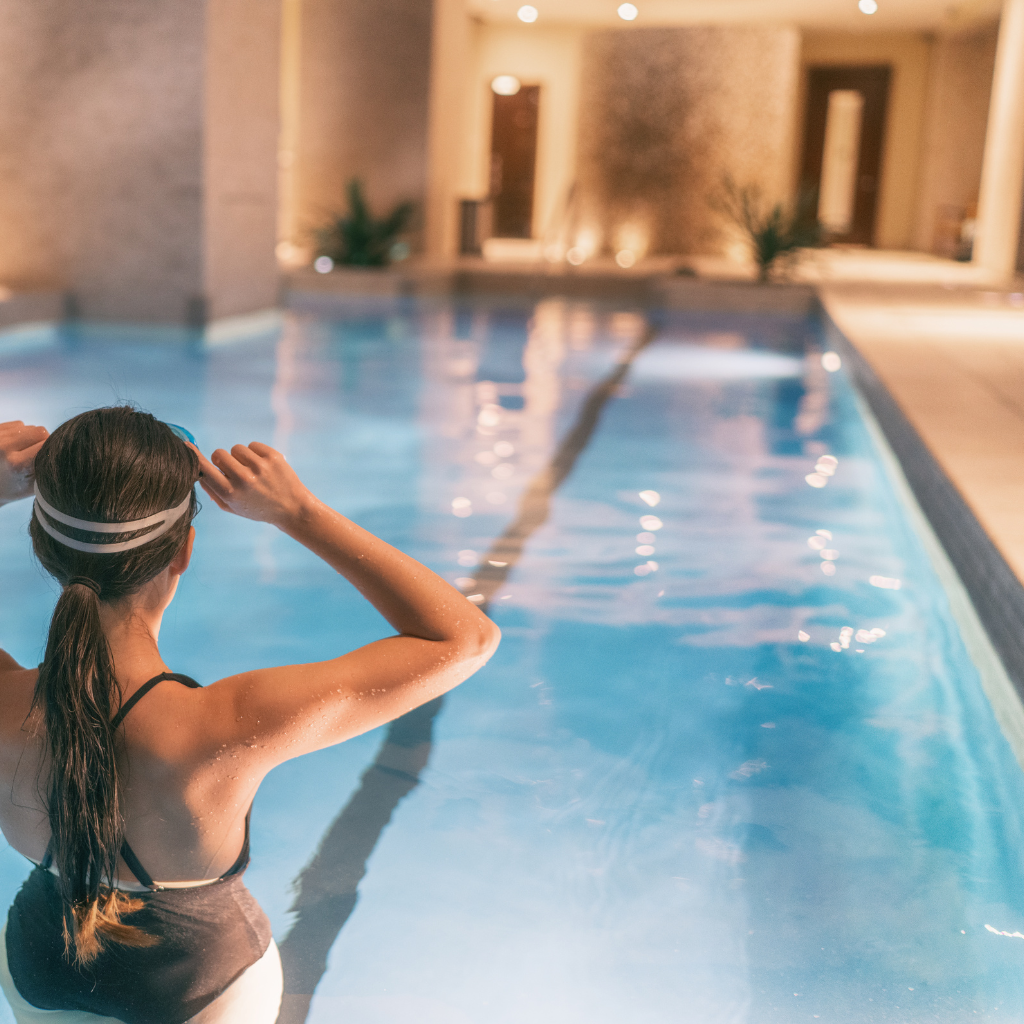
Conclusion
To summarize, installing a swimming pool in a basement merges luxury with functionality, providing a private aquatic retreat for daily use. Key considerations include structural integrity, ventilation, and waterproofing. Design options range from lap pools to spa-like settings, each enhancing the property’s value and appeal. Regular maintenance guarantees longevity and safety. While initial costs are substantial, the investment pays off in enhanced well-being and home value, making it a practical choice for those seeking innovative home improvement.
